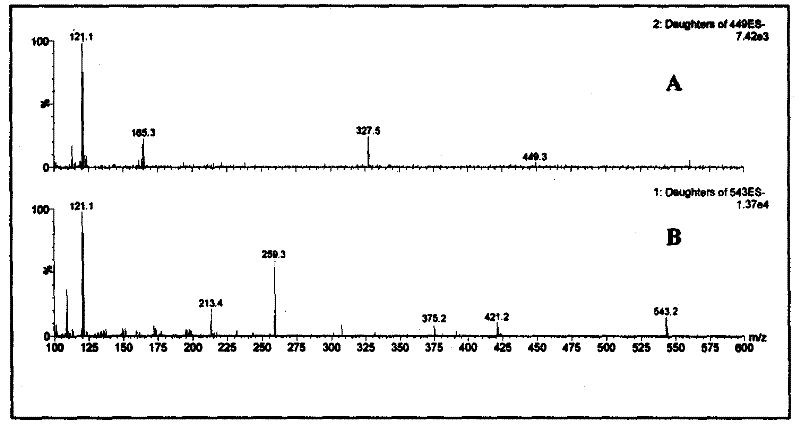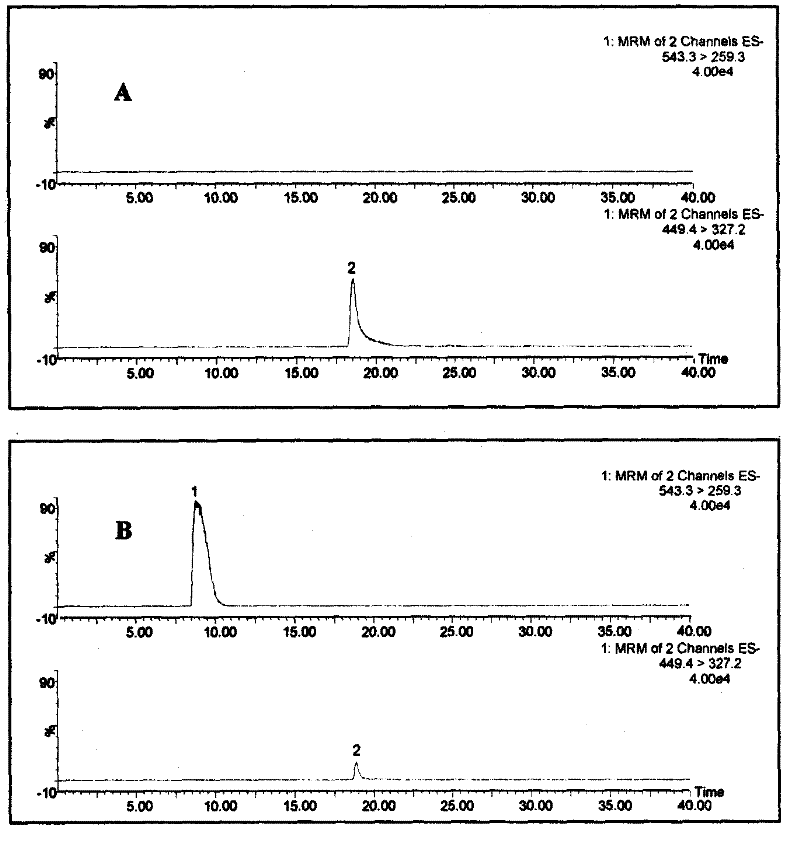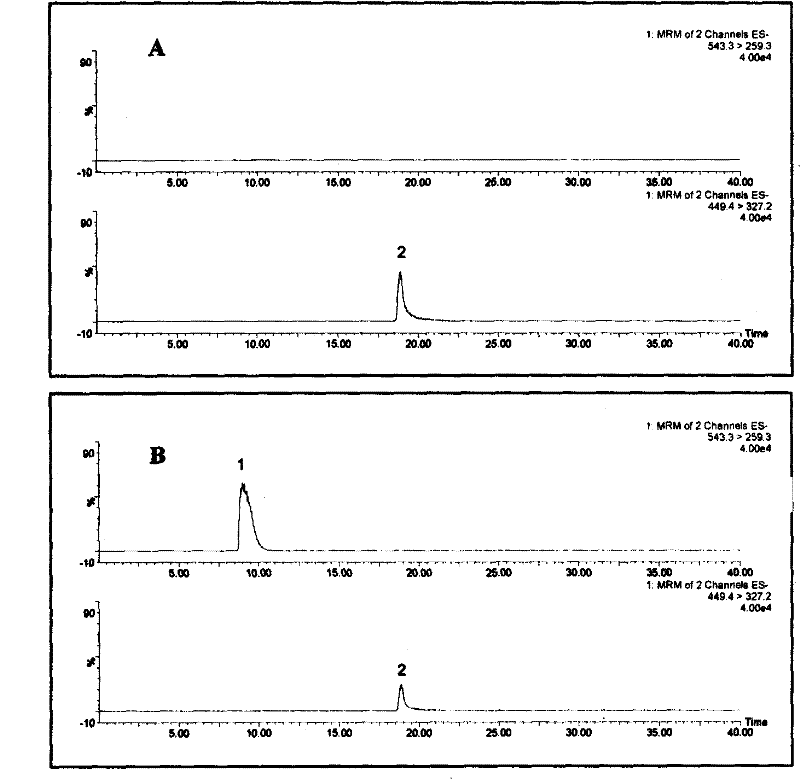A rapid identification method for judging whether Radix Paeoniae Alba has been fumigated with sulfur
A technology of sulfur fumigation and identification method, applied in measuring devices, instruments, scientific instruments, etc., can solve the problems of large sampling quantity, weak method specificity, lack of objective basis, etc. Sample processing for simple effects
- Summary
- Abstract
- Description
- Claims
- Application Information
AI Technical Summary
Problems solved by technology
Method used
Image
Examples
Embodiment 1
[0019] 1. Chromatography system:
[0020] Waters 2695 HPLC-PDA system. Column: Waters Nova-Pak C 18 Column (3.9 x 150 mm, 5 μm). The mobile phase was composed of 0.1% formic acid in water and 0.1% formic acid in methanol. Gradient elution: see Table 1. The elution flow rate was 1.0 mL / min. The temperature of the column oven and the sample chamber were 35°C and 10°C, respectively. The sample injection volume was 20 μL.
[0021] Table 1 Gradient elution table
[0022]
[0023] 2. Mass Spectrometry Conditions
[0024] Waters Micromass Quattro micro mass spectrometer; ESI - Ion source; the spray gas flow rate was set to 400L / h, the temperature was 400°C; the cone airflow was set to 50L / h; the capillary voltage was set to 3500V, the cone voltage of paeoniflorin and its sulfide was set to 25V and 40V respectively, and the collision energy They are respectively set to 15eV and 40eV, and the pressure of the collision gas (argon) is 0.35Pa. The ionic reactions were m / z 449...
Embodiment 2
[0030] 1. Chromatography system
[0031] Waters 2695 HPLC-PDA system. Chromatographic column: Hanbang Hedera ODS-2 (4.6×100mm, 5μm). The mobile phase was composed of 0.2% formic acid in water and 0.2% formic acid in acetonitrile. Gradient elution: see Table 2. The elution flow rate was 1.0 mL / min. The temperature of the column oven and the sample chamber were 35°C and 10°C, respectively. The sample injection volume was 20 μL.
[0032] Table 2 Gradient elution table
[0033]
[0034] 2. Mass Spectrometry Conditions
[0035] Waters Micromass Quattro micro mass spectrometer; ESI - Ion source; the spray gas flow rate was set to 400L / h, the temperature was 400°C; the cone airflow was set to 50L / h; the capillary voltage was set to 3500V, the cone voltage of paeoniflorin and its sulfide was set to 25V and 40V respectively, and the collision energy They are respectively set to 15eV and 40eV, and the pressure of the collision gas (argon) is 0.35Pa. The ionic reactions were ...
Embodiment 3
[0041] 1. Chromatography system
[0042] Waters 2695 HPLC-PDA system. Chromatographic column: Waters Symmetry C8 (2.1×150 mm, 5 μm). The mobile phase consisted of water and methanol. Gradient elution: see Table 3. The elution flow rate was 0.3 mL / min. The temperature of the column oven and the sample chamber were 35°C and 10°C, respectively. The sample injection volume was 20 μL.
[0043] Table 3 Gradient elution table
[0044]
[0045] 2. Mass Spectrometry Conditions
[0046] Waters Micromass Quattro micro mass spectrometer; ESI - Ion source; the spray gas flow rate was set to 400L / h, the temperature was 400°C; the cone airflow was set to 50L / h; the capillary voltage was set to 3500V, the cone voltage of paeoniflorin and its sulfide was set to 25V and 40V respectively, and the collision energy They are respectively set to 15eV and 40eV, and the pressure of the collision gas (argon) is 0.35Pa. The ionic reactions were m / z 449.4 → m / z 327.2 and m / z 543.3 → m / z 259.3...
PUM
 Login to View More
Login to View More Abstract
Description
Claims
Application Information
 Login to View More
Login to View More - R&D
- Intellectual Property
- Life Sciences
- Materials
- Tech Scout
- Unparalleled Data Quality
- Higher Quality Content
- 60% Fewer Hallucinations
Browse by: Latest US Patents, China's latest patents, Technical Efficacy Thesaurus, Application Domain, Technology Topic, Popular Technical Reports.
© 2025 PatSnap. All rights reserved.Legal|Privacy policy|Modern Slavery Act Transparency Statement|Sitemap|About US| Contact US: help@patsnap.com



